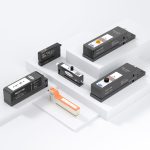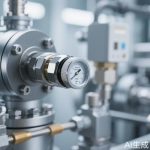In an era where data drives decisions, the accuracy of pressure sensors has become a cornerstone of technological advancement. From industrial automation to consumer electronics, these tiny yet powerful devices play a pivotal role in ensuring efficiency, safety, and reliability. But what exactly defines pressure sensor accuracy, and why does it matter so much in today’s interconnected world?
Pressure sensor accuracy refers to the closeness of a sensor’s output to the true pressure value it is measuring. It is typically expressed as a percentage of full-scale output or as a combination of factors like linearity, hysteresis, and repeatability. In applications where even the slightest deviation can lead to significant consequences, high accuracy is not just a luxury—it is an absolute necessity.
Consider the healthcare industry, for instance. In ventilators and blood pressure monitors, inaccurate pressure readings could compromise patient safety. Similarly, in automotive systems like tire pressure monitoring or engine management, precision ensures optimal performance and fuel efficiency. The margin for error is minimal, and the stakes are invariably high.
Advancements in materials science and microelectromechanical systems (MEMS) have dramatically improved pressure sensor accuracy over the years. Modern sensors can achieve accuracies as high as ±0.1% of full scale, thanks to innovations in calibration techniques and signal processing algorithms. These improvements have expanded the horizons of where pressure sensors can be deployed, including harsh environments like deep-sea exploration or aerospace applications.
However, achieving and maintaining such high levels of accuracy is not without challenges. Factors like temperature fluctuations, mechanical stress, and long-term drift can affect sensor performance. Manufacturers address these issues through rigorous testing, compensation mechanisms, and robust design principles. For end-users, understanding these factors is key to selecting the right sensor for their specific needs.
As we move toward an increasingly automated and data-centric future, the demand for precise pressure sensing will only grow. Whether it’s in smart cities managing water distribution or in wearable devices monitoring health metrics, accuracy will continue to be the differentiating factor between good and great technology. Investing in high-accuracy pressure sensors is not just about meeting specifications—it’s about building a foundation for innovation and trust.
In conclusion, pressure sensor accuracy is more than a technical specification; it is a critical enabler of progress across industries. By prioritizing precision, we unlock new possibilities and ensure that technology serves us reliably and safely, now and in the years to come.




Leave a Message